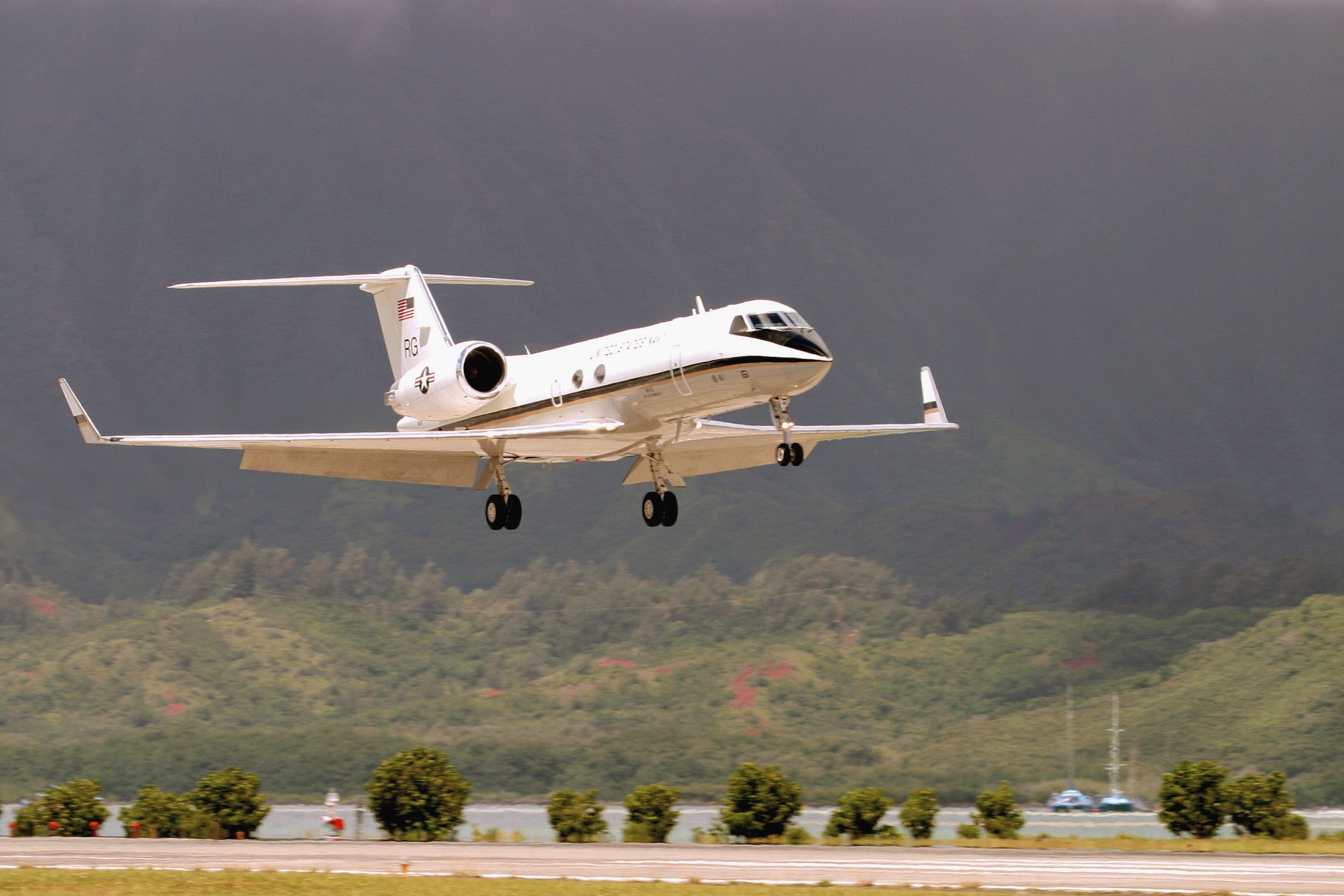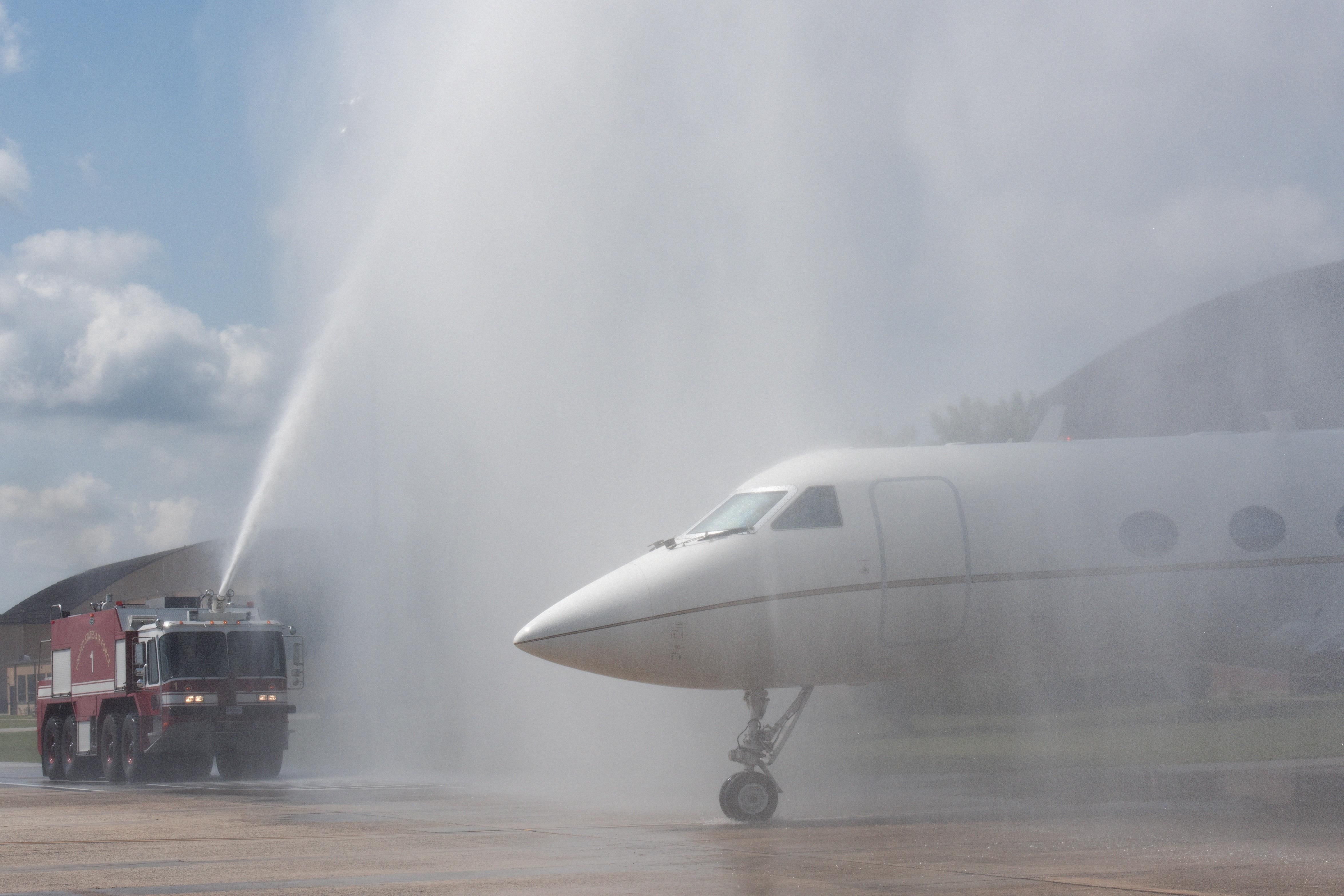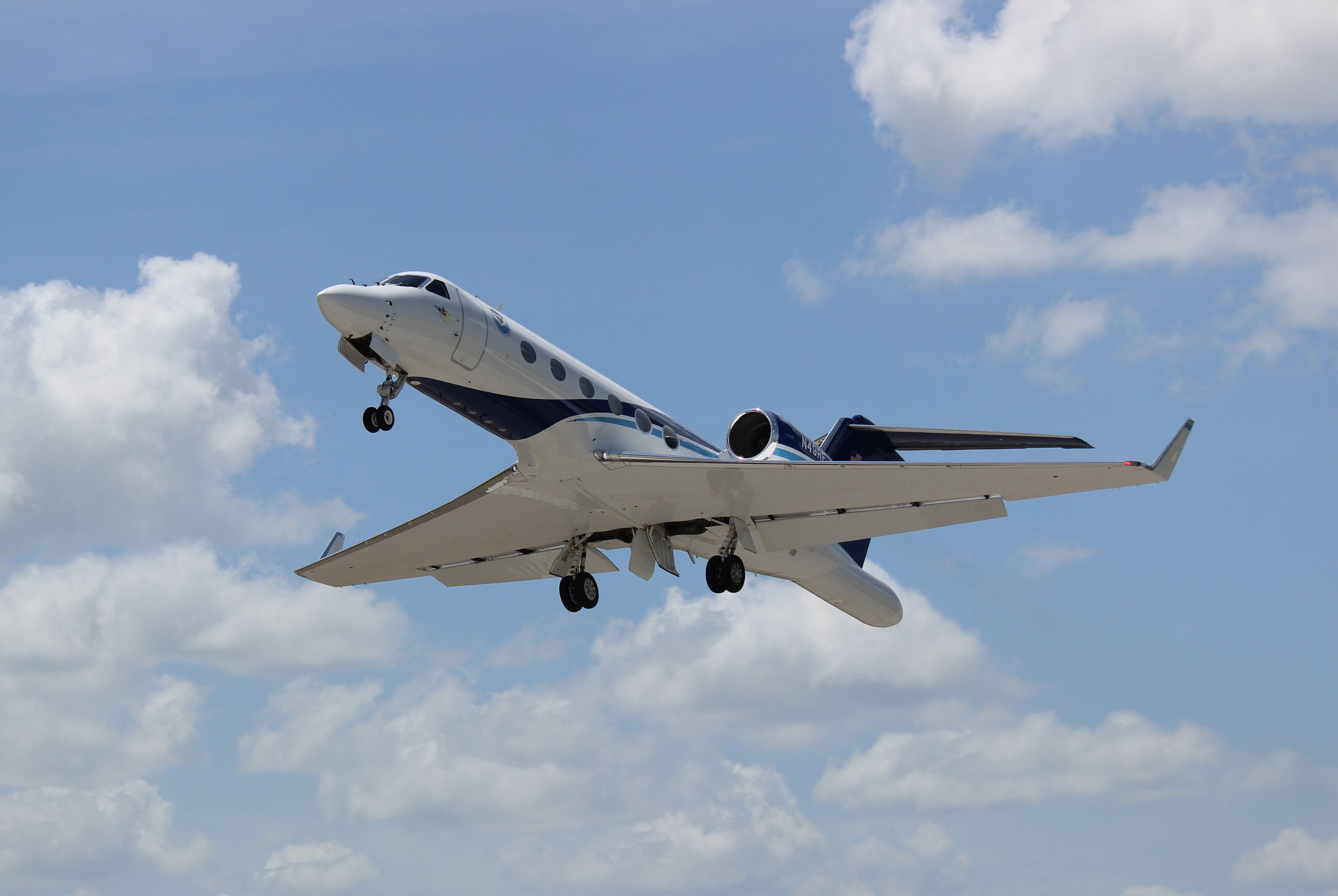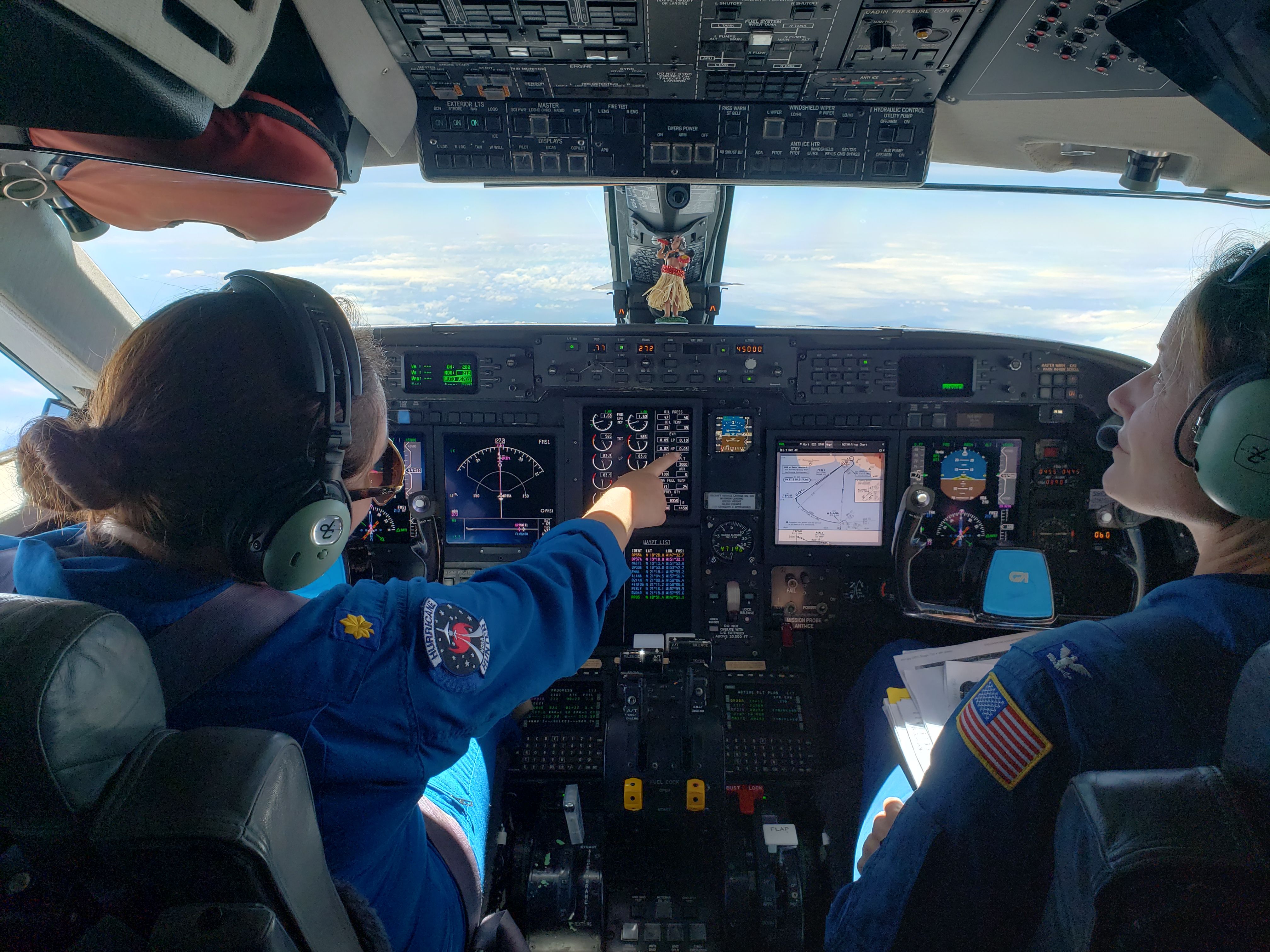Summary
- The Gulfstream IV was modified into several unique configurations, providing aircraft options for the US government.
- The C-20G and C-20H were used by the United States Navy (USN) and the United States Air Force (USAF), respectively.
- The NOAA uses the Gulfstream IV-SP to forecast hurricanes but plans to transition to the G550 soon.
The Gulfstream G-IV, also known as the Gulfstream IV, was one of the best-selling business jets in the industry at one time. Before retiring the Gulfstream IV and its derivative, the G450, in January 2018, the United States-based manufacturer had managed to sell over 900 aircraft, including more than 360 Gulfstream G450s.
At the time, Mark Burns, the President of Gulfstream, affirmed that the G450 was one of the best-selling private jets during its production year between 2006 and 2018, with the executive adding that pilots and passengers loved the aircraft.
“During its 30-year history, the GIV series transformed business aviation, and the G500 is already well on its way to doing the same, with the industry’s first active control sidesticks and the most integrated application of touch-screen controls in the flight deck.”
While the G-IV and the G450 were eventually replaced by the Gulfstream G500, the former and latter aircraft were used on unique missions, which did not include transferring high-net-worth individuals or VIPs across the globe. As such, the aircraft was seen in a one-of-a-kind configuration, including hunting hurricanes.
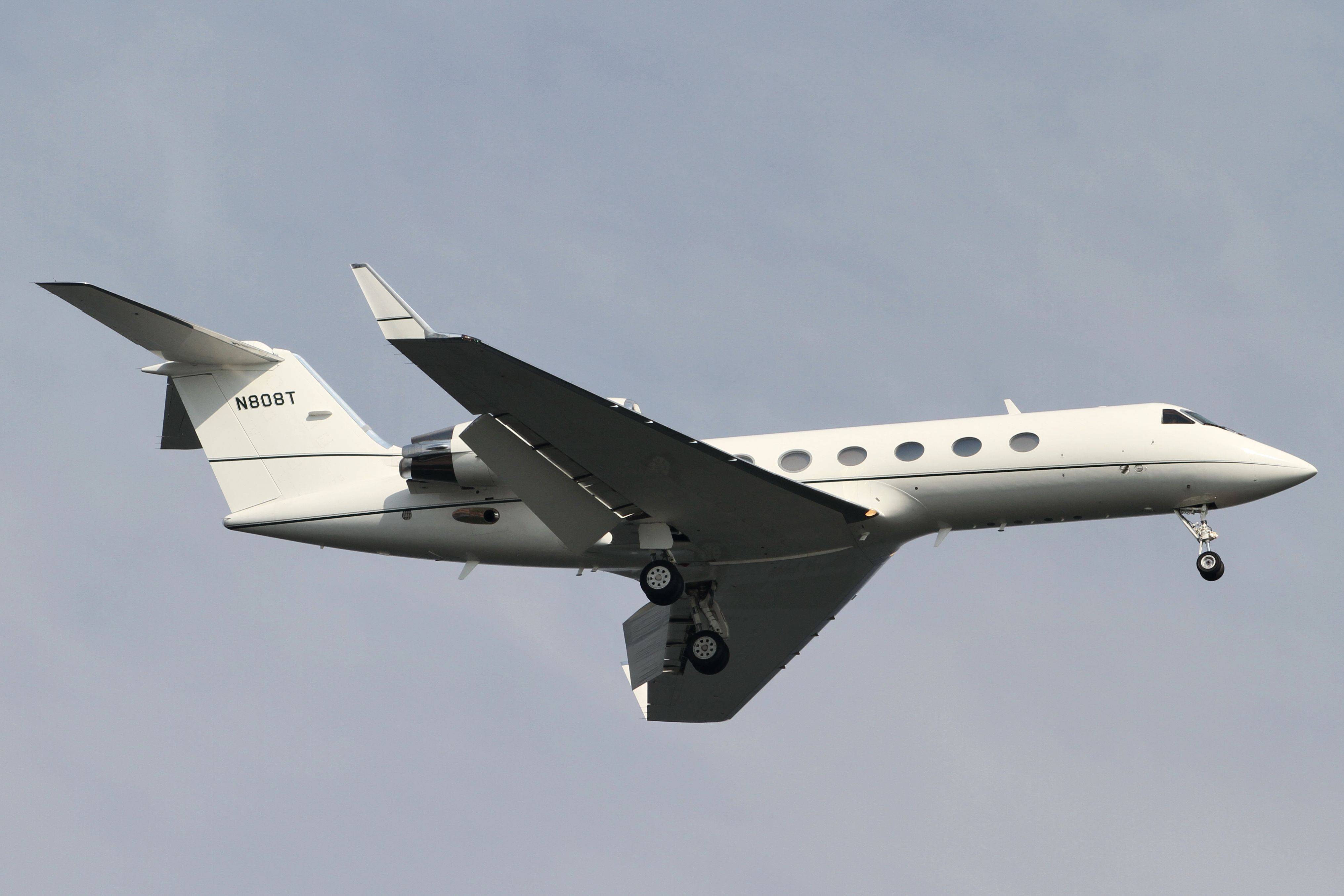
Jacuzzi On Board: A Look At Tom Cruise’s Gulfstream IV Private Jet
The actor and licensed pilot cruises in style in his $20-million jet
1 Logistics aircraft for the United States Navy
Type designation: C-20G
According to the United States Navy (USN), the C-20G is a militarized version of the Gulfstream IV, built by the manufacturer to provide long-range, worldwide airlift and logistics support for military and government officials. As of July 2020, the USN said that one C-20G was undergoing modifications to be deployed as a Range Support Aircraft.
The service branch also pointed out that the C-20G was an all-weather, long-range, high-speed aircraft capable of operating transoceanic flights. Furthermore, it can be configured for cargo, passengers, or a combination of the two, enabling the USN to have a flexible airframe to support a wide range of missions.
Photo: William R. Goodwin | USN
Lastly, the USN detailed that a new Gulfstream IV would cost $37 million, with the aircraft, powered by two Rolls-Royce Tay MK611-8 turbofans, being capable of flying up to 5,130 nautical miles (9382 kilometers). The C-20G’s crew comprises a pilot, co-pilot, crew chief, flight attendant, and loadmaster, who can be deployed as required.
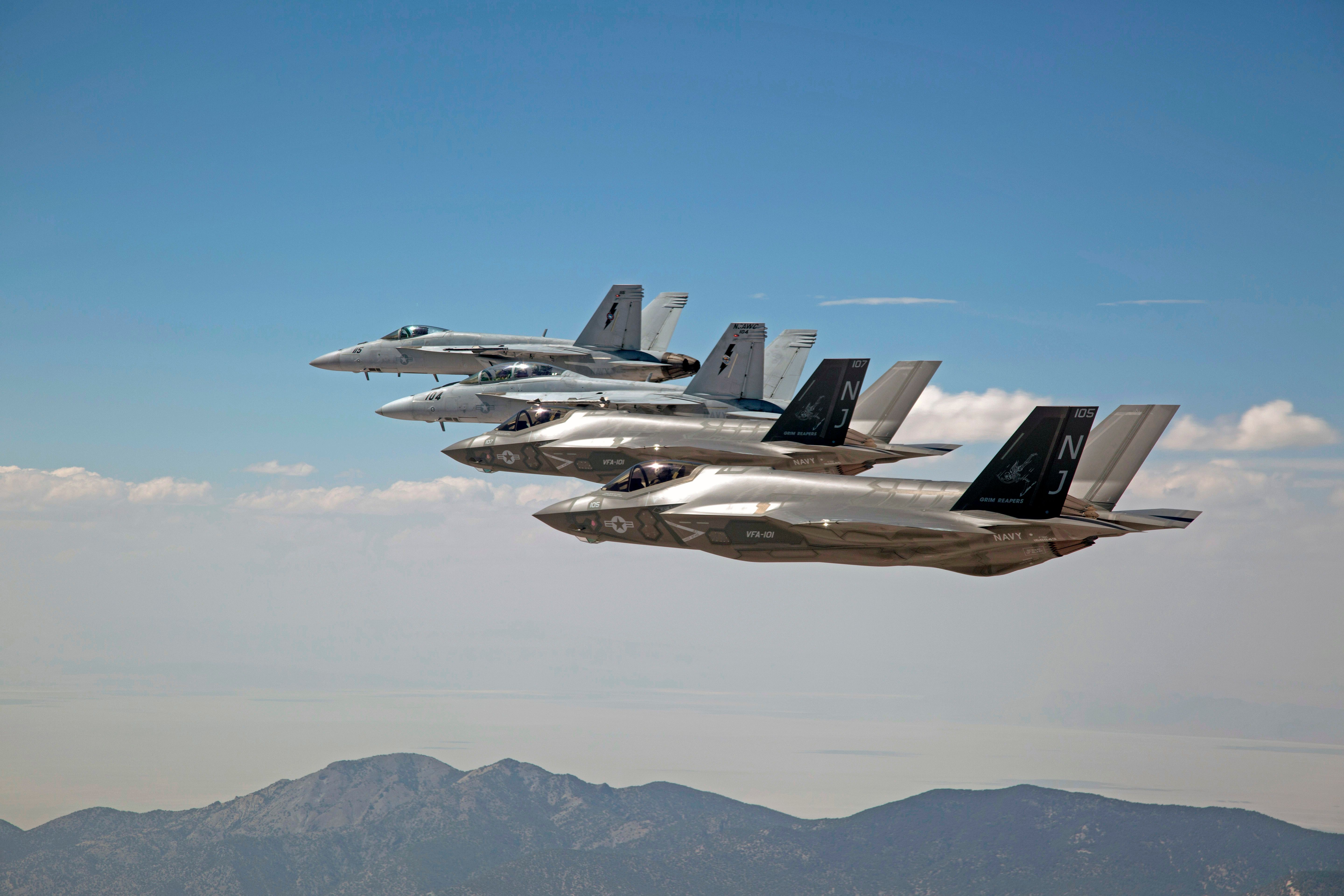
Examined: The Aircraft Fleet Of The US Navy
A guide into the significant aircraft of the United States Navy, from fighters to transports to surveillance aircraft.
2 Support airlift for the United States Air Force
Type designation: C-20H
Meanwhile, the C-20H was used by the United States Air Force (USAF). The service branch initially designated the Gulfstream III, the predecessor of the Gulfstream IV, as the C-20B, which was used for global air missions. The C-20B replaced the C-140B, the Lockheed JetStar, most famously used by Elvis Presley.
Initially, the USAF chose the Gulfstream III to replace the C-140B in 1983. Gulfstream delivered three C-20A and five C-20B aircraft to the USAF and the 89th Airlift Wing, based at Joint Base Andrews. The 89th Airlift Wing also operates the VC-25A, known as the Air Force One aircraft, whenever a US president is onboard the modified Boeing 747.
Nevertheless, Gulfstream delivered the latest aircraft, the C-20H, to Joint Base Andrews in 1992. Following the decommissioning of the C-20A in 2002, two C-20H aircraft were transferred to the Ramstein Air Base (RMS) in Germany.
Photo: Valentina Lopez | USAF
In August 2017, the USAF retired its C-20s. In an announcement, Derek Gallagher, a Lieutenant Colonel and commander of the 76th Airlift Squadron (AS), remarked that the C-20H was part of operations in Africa, as well as providing distinguished visitor (DV) airlift to Europe and deploying to Afghanistan.
Similarly to the C-20G, the C-20H was powered by two Rolls-Royce Tay Mark 611-8s, with the C-20H boasting a range of 4,220 NMI (7,815 km). One aircraft cost the USAF $29.4 million and can carry 12 passengers. It has a five-member crew comprising a pilot, co-pilot, flight engineer, communication system operator, and flight attendant.
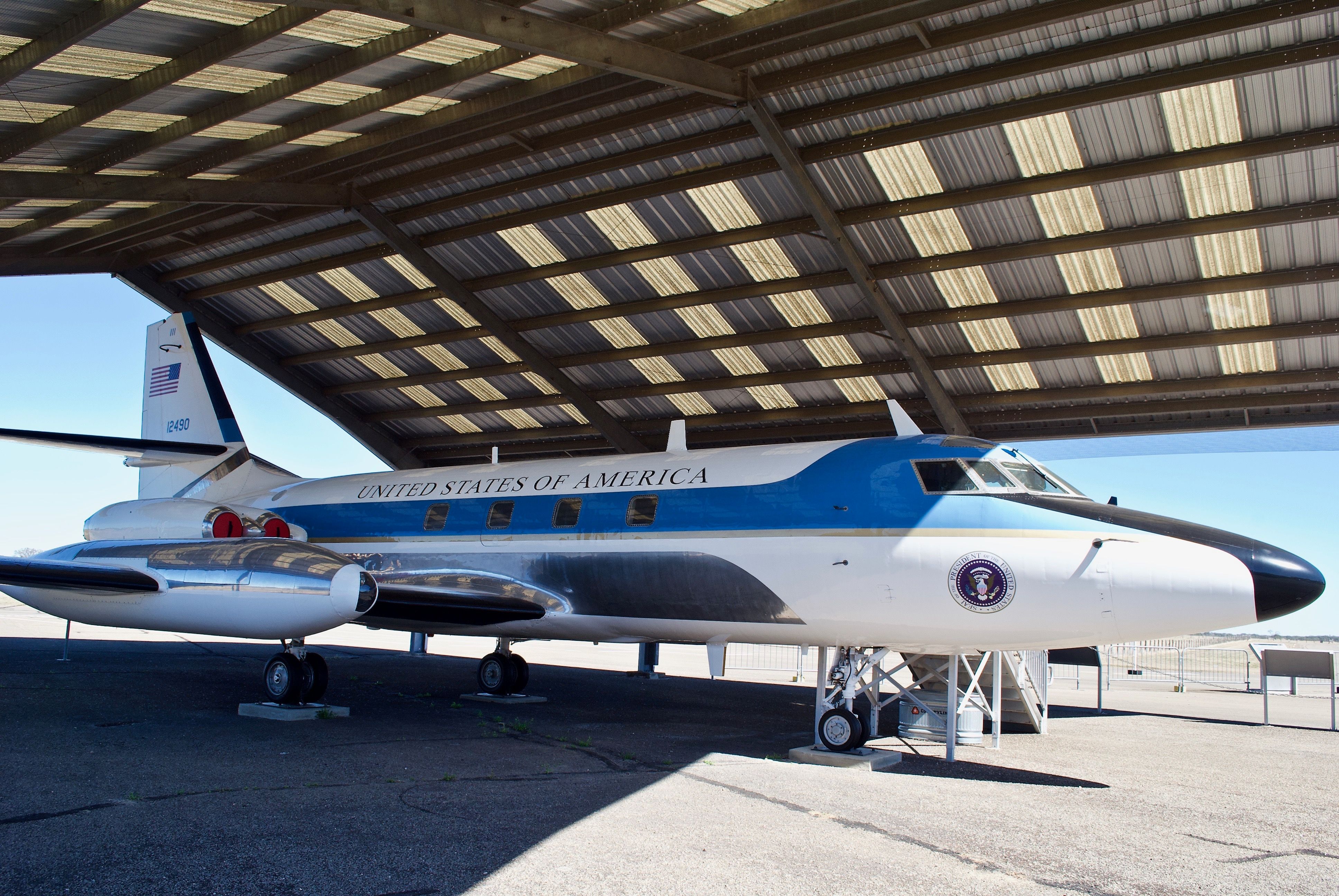
World’s First Private Jet: Are Any Lockheed JetStars Still Flying?
The last original JetStar was retired in 2019.
3 Hurricane forecasting and research platform for the National Oceanic and Atmospheric Administration
Type designation: Gulfstream IV-SP
Lastly, the National Oceanic and Atmospheric Administration (NOAA) has a Gulfstream IV, namely a G-IV-SP, to forecast and research hurricanes. According to the company, the aircraft flies around and over-develops weather systems to create a detailed picture of the upper atmosphere surrounding it.
The aircraft, registered as N49RF, was made in 1994. The crew used for hurricane storm missions includes between two and three pilots, one flight engineer/mechanic, one flight meteorologist, one high-altitude profiling system (HAPS) operator, with the role open to automation as well, and three engineering technicians/dropwindesonde (Sonde) system operators.
Photo: NOAA
According to NOAA, the aircraft’s primary tool to map the upper atmosphere during a storm is a tube-shaped instrument released from the bottom of the Gulfstream IV called the GPS dropwindsonde. It transmits to the aircraft the pressure, temperature, humidity, and GPS Doppler frequency shifts as it descends to Earth. The latter is used to measure the horizontal and vertical wind components.
Photo: Paul Flaherty | NOAA
However, the IV-SP will eventually be replaced by a Gulfstream G550. NOAA announced the plan in August 2019, saying it awarded $40.7 million to Gulfstream for the base airframe, which will be later modified for hurricane and tropical storm forecasts, atmospheric research, and other NOAA missions.
While NOAA said that the aircraft would join its fleet in late 2022, the administration later said the G550’s modifications would be completed in FY24/25 in March 2022. Furthermore, NOAA was planning to acquire a second G550 for its missions.
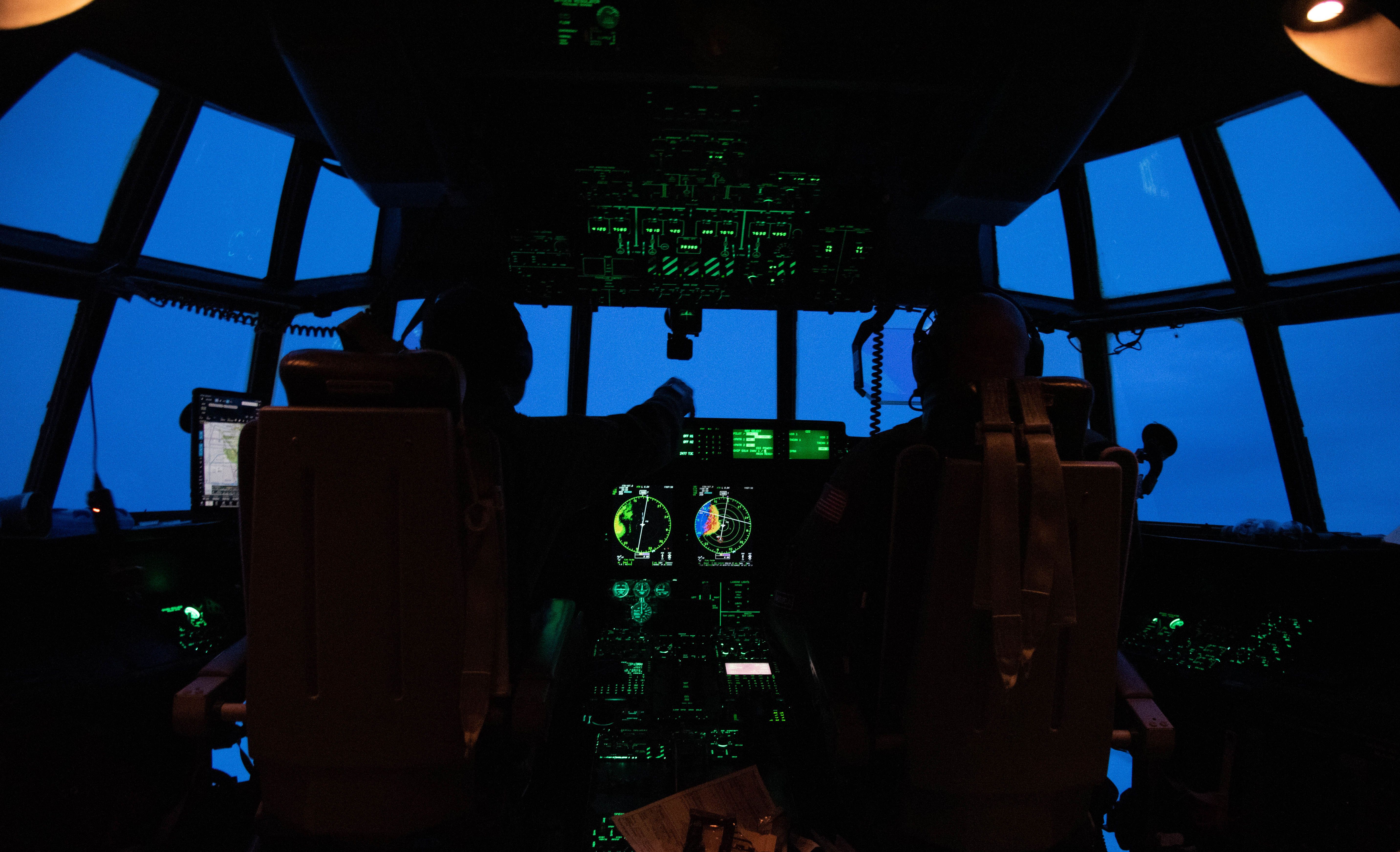
Here’s Why The US Government Flies Aircraft Into Hurricanes
Hurricanes Hunters help provide real-time data to the NHC.


